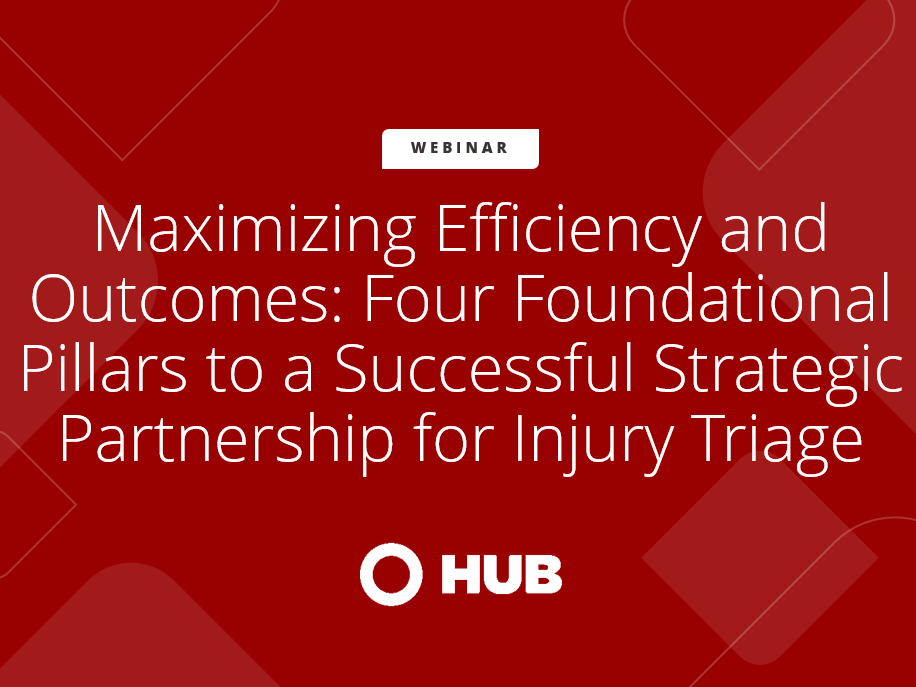Even If the ESG Focus Is Distorted by Political Static, Governance Should Remain Steadfast

It’s been a noisy year so far on the ESG front.
A broad bundle of factors identified by and intended for the financial investment industry nearly 20 years ago, environmental, social and governance (ESG) has grown into a highly politicized acronym. This has heightened risk for companies in nearly every sector.
The cacophony of several raucous U.S. congressional hearings over the summer combined with a slew of state-by-state legislative activity tied to ESG matters have made it increasingly difficult for the business community to determine how to respond to public outcries over the alarming climate and social conditions on our planet.
But risk experts urge senior leadership to prioritize governance and comprehensive enterprise risk management above all else when looking at implementing new initiatives or disclosing any positions tied to ESG.
“For many insureds … the real burden is in the goal setting, reporting and monitoring,” said James Rizzo, product leader – U.S. D&O, executive risks, at Beazley. “This can be time consuming for managers but also costly to implement and monitor.”
As the business community awaits forthcoming SEC regulations on greenhouse gas emission disclosures, cybersecurity and human capital management, these costs may only increase.
“This work carries an execution risk as well as exposure to greenwashing allegations. Companies with bold goals may find themselves in a position to fail and are best served by establishing realistic and measurable goals,” Rizzo added.
Lines Drawn
Despite many experts having deemed “ESG” an ambiguous label, the lines have clearly been drawn between jurisdictions amenable to advancing initiatives associated with the term and those intent upon halting the de facto movement in its tracks.
Companies doing business in the EU and UK have relative clarity on how to navigate ESG compliance as the region has regulations aimed at curbing the tendency of organizations to exaggerate how much they prioritize people and the planet, also known as greenwashing. Globally, major economies like India and Singapore have also issued ESG regulatory standards as well since 2021.
In the U.S., however, political risks are prompting more boards to steer clear of any disclosures that even seemingly juxtapose ESG priorities alongside shareholder interests. In the first half of 2023, double the number of ESG-related legislation has been proposed across the U.S. than in 2020-2022.
On the anti-ESG end, three times the amount of legislation was proposed in the first half of 2023 than over the previous three years combined. Thirty-one pro-ESG bills were put forth before July as well.
While the composition of each new piece of legislation varies, states have aimed to formalize how corporations handle everything from transitions to renewable energy to fiduciary responsibilities to matters of diversity, equity and inclusion.
“In 2023, although 165 pieces of anti-ESG legislation were proposed in 37 states, only 22 anti-ESG laws were adopted in 16 states,” said Lawrence Fine, management liability coverage leader at Willis Towers Watson FINEX North America.
“Obviously, people feel strongly on both sides of the issues and are fighting hard for their point of view,” Fine added. “U.S. companies these days need to bear in mind that taking a strong stand for or against ESG issues bears the risk of alienating someone, including potentially consumers, shareholders and regulators.”
“This is a good example of why some companies are creating a specific ‘ESG Risk Register,’ where this kind of political risk topic and other ESG risk topics can be articulated and tracked in a way specific to the business,” added Jonathan Weatherly, ESG global products leader, Willis Towers Watson.
Tallying Settlements
Despite what researchers describe as the “wildfire” ignited by this year’s ESG legislative activity in the U.S., some business leaders view the backlash they’ve faced in pursuit of their organization’s sustainability goals as minimal or moderate ― more like conversation in the background, said Mallory Thomas, partner with Baker Tilly’s Risk Advisory Practice.
But that could soon change as divisive regional ESG sentiments could further complicate the outcomes of a growing number of securities class actions and derivative lawsuits tied to each aspect of ESG.
“The complexity of rules [associated with ESG] has created opportunity for error, omission and alleged fraud that can lead to regulatory intervention, a sharp decline in the stock price, and impact the investors in that stock negatively,” Rizzo said. “All of these may lead to event-driven litigation and shareholder activism, resulting in securities class actions and derivative suits.”
The Institutional Shareholder Services (ISS) has tracked event-driven litigation trends tied to social movements, environmental disasters and data privacy breaches. Between 2018 and 2019, event-driven litigation hovered between 5.7% and 5.8% of securities class actions respectively. By 2020, these suits made up 10.8% of SCAs.
As the SEC’s ESG Task Force gains traction, more companies could be looking at multi-million-dollar settlements like the $55.9 million penalty that the publicly-traded Brazilian mining company, Vale, agreed to pay back in March 2023 following allegations of issuing misleading disclosures prior to a deadly dam collapse.
In July, Deutsche Bank subsidiary DWS Group also disclosed that it had set aside millions of dollars in preparation for a potential settlement to resolve the SEC’s two-year inquiry into its alleged overstatement of DWS’s use of ESG metrics.
Nearly every industry, from retailers to financial stewards, could face increasingly stringent ESG scrutiny and subsequent litigation.
“So, it’s here,” said Jack Flug, managing director at Marsh, considering the entire ESG risk-reward panorama. “I don’t think it’s going away.”
A Hushing Wave
Moving forward, rather than touting the ESG banner, companies are voluntarily including the term less often in their public disclosures than in years prior. According to Factset, 74 of S&P 500 companies cited ESG on earnings calls in Q1 of 2023 ― the lowest rate in three years after a steady decline from a peak 156 mentions in Q4 of 2021.
A report from RBC Capital Markets also outlined that more than half of “sustainable funds” have dropped specific mentions of ESG pointing to concerns over the label having been weaponized.
With leaders like Black Rock’s Larry Fink abandoning usage of the ESG term, we may be entering an era of “greenhushing” where companies may continue to invest and take action in areas previously lumped into the sustainability catch-all, but boards may lean into a less-is-more position when it comes to disclosure.
Even statements made in documents that would have historically been considered marketing materials today could be scrutinized in a court of law if they appear to present ESG-related credentials to investors, said Nir Kossovsky, CEO of Steel City Re, a reputation risk insurer: “Anything disclosed is considered to be a statement of truth … and it doesn’t even have to be disclosed in regulatory filings.”
The securities class action brought against Signet Jewelers and members of the board by its investors is one such example. In 2020, the company agreed to pay a $240 million settlement following a multi-faceted legal battle, in part, over allegations of the company issuing misleading public statements concerning sexual harassment involving Signets’ senior executives.
Insurers were reportedly on the hook for $200 million of Signets’ settlement, not including the legal fees.
Today, “being a board member is a very delicate balancing act,” Flug said. “If you don’t do anything there’s a big issue. If you do something and someone believes that it’s too much, it’s an issue.”
Perched on the ESG seesaw, many directors and officers wonder, where’s the happy medium? “And that has become a rather difficult situation for organizations to deal with,” Flug added.
As someone who works with mid-market teams to launch IPOs, Thomas said she urges companies to take on ESG in moderation. The Conference Board’s recently published guide to building a sustainability culture with the support of Baker Tilly also encourages leadership teams to consider taking a measured approach and only pursue one to two meaningful sustainability goals at a time.
“U.S. companies these days need to bear in mind that taking a strong stand for or against ESG issues bears the risk of alienating someone, including potentially consumers, shareholders and regulators.” ― Lawrence Fine, management liability coverage leader, Willis Towers Watson FINEX North America
While every company with ESG missteps may not face litigation, not meeting publicly-disclosed targets and goals presents major reputational risk, she added.
Before issuing external statements, Thomas advised executive teams to focus on clearly assessing their current position on all aspects related to sustainability and from there, articulate the organization’s journey in a way that resonates with core stakeholders.
“What’s going to be really important to stakeholders,” including shareholders, Thomas noted, “is that you’re enhancing the value; it’s value creation at the end of the day.”
As long as companies comply with minimal existing disclosure regulations in the U.S., WTW’s Fine noted, “there are unlikely to be litigation or other financial exposures for companies from being less vocal about their ESG practices.”
“The main danger from ‘greenhushing,’ ” Fine said, “is forgoing positive credit that a company might deserve for their ESG efforts.”
Navigating Exclusions
While experts agree that risk transfer alone is not a viable strategy to manage ESG risks, insurance has a vital role to play in helping organizations navigate a range of exposures.
“ESG transition is complex and organizations having to navigate new regulations and standards will seek professional advice,” noted Aidan Flynn, head of London and international underwriting management, cyber at Beazley. “For errors & omissions, risks arise principally for professional advisors helping clients through ESG transition within their respective organizations.”
But ESG-related perils can impact a broad variety of products, including environmental GL, product liability, employment practices liability, and reps & warranties, Rizzo added.
Cyber policies are also called upon to address “governance” claims involving data breaches and other cyber events, said Dennis J. Artese, equity shareholder, Anderson Kill.
D&O policies, however, are often the first place to look for coverage when the SEC initiates an investigation into a company’s ESG-related disclosures, said Michele Centeno, senior vice president at Lockton: “That’s when a notice of circumstance could be reported.”
Although many policies do not obligate the insured to report a notice of circumstance, Flug said, leaders must be fully informed as to what type of D&O policy their organization has: “You have to understand what exactly a claim is, what your obligations are.”
For example, “there’s an absolute obligation to report capital C claim, which is defined by the policy,” he added. “You need to look at these things, and you need to see what you need to do and when you need to do it.”
“The fines and penalties exclusion usually comes into play under the D&O policy for this exposure, however, it’s possible that coverage could apply depending on the circumstance and jurisdiction,” Centeno said.
In her review of recent D&O claims, Centeno has read about some policies paying fines and penalties even though conduct exclusions could have been applied, “and several policies have tried to deny coverage,” she noted.
Generally, for conduct exclusions to apply, Centeno added, a claim typically needs to be adjudicated. “And a very high percentage of those types of claims are settled; they rarely go to trial.”
There may be other ways to get coverage for fines and penalties, Flug noted. “A lot of people have historically looked at insuring some of this offshore to see if that possibility exists.”
Pollution or environmental exclusions may also come into play, and boards will want to have their coverage lawyers take a close look at all exclusionary language in their policies, Flug added ― especially pertaining to A side coverage.
“Exclusionary language, even if it is narrow, should be broad as pertains to the A side cover so that if there’s a derivative action brought, you want to make sure that it’s covered for the individual, different if you will, [than] on the traditional policy …”
Without that cover, he added, members of the board could have to pay out of their own pockets.
As insureds review their D&O policies with their brokers or consultants, “make sure that the language ― which was perhaps probably state of the art last year ― remains state of the art this year based on litigation that has transpired. Regulations and the economic environment in general have most likely changed ― and that’s both [in the U.S.] and globally if you’re a global company,” Flug said.
Emphasis on the “G”
While “E” and “S” may be the most prominent, and polemic, notes in the ESG score, companies will need to fine tune the “G” to make sure D&O and other insurance remains a viable option to address complications, should they arise.
Although the D&O market has plateaued after several years of soaring premiums, underwriters remain selective. And companies that have a strong governance stature, upheld in part by internal sustainability officers, may find themselves ina better position to have discussions with underwriters.
“As D&O underwriters and E&O underwriters, we’re always focused around good corporate governance, and, importantly, the initial mindset around how shareholders would be prioritized in the [ESG] process,” said Paul Larson, president of financial lines at Liberty Mutual.
“What’s shifted over time,” he added, “is accountability, rather than just to shareholders but to stakeholders.”
And with environmental and social justice activists now forming part of the larger stakeholder pool, Larson said a company’s overall culture is also what’s being assessed during the underwriting process.
“From an underwriting lens, you want to make sure how they’re approaching the environment, over the long term, is going to mitigate further losses,” Larson shared as an example.
“Because ESG risk is just one more thing under the big heading of ‘reputation risk’ ― what stakeholders expect of a firm and the risk of how well it delivers it” is why, Kossovsky said, building resilience to prevent long-tail reputational harm from alleged ESG misrepresentations is essential.
“Lightning does strike,” he said, but firms that can demonstrate that they have developed effective governance systems and implemented thoughtful risk management experience a much different impact: “That’s where enterprise risk management creates value.” &













